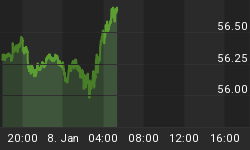A shocker this week is that the US is "springing forward" with Daylight Saving Time (DST) three weeks early. So we felt this gives us yet another opportunity to point out how the government continually robs Peter to pay Paul in just about every respect.
Supposedly Benjamin Franklin conceived the idea (one of his many) and it stuck through the years because it helps farmers milk the cows and children see the sidewalk as they skip to school in the morning. Of course, everyone else lost that precious hour because after getting off of work at 5pm and the commute home, it was dark.
So it may be interesting to note that the latest adjustment to DST is just one of many over the past hundred years or so. This tinkering is further ridiculed by the State's right to choose whether or not to observe daylight savings time under conditions specified by the Uniform Time Act of 1966.
The latest change is part of an energy bill passed by Congress called the Energy Policy Act of 2005. A recent government study estimated the additional energy savings from giving Paul back his hour to be equivalent to 100,000 barrels of oil a day, or about half of 1 percent of the nation's daily oil consumption. Most of the energy saved would be in the form of electricity because lights would be used less in the early evenings, the study projected. Essentially, we can all thank Big Brother because it claims that it can mandate more sunlight out of the day!
But the mockery lies in the fact that a study was first done in 1974 by the U.S. Department of Transportation, stating that robbing Paul of one hour a day would put him in bed earlier and then mean that we save more than one percent of our daily energy consumption.
Whoever did this original story must have been elderly because Paul does not go to bed at 6pm, and instead turns on the lights until he goes to bed at 10pm, thus using more energy.
Of course, there is also the known "expanded economic opportunity through extension of daylight hours to peak shopping hours and through extension of domestic office hours to periods of greater overlap with the European Economic Community."
In addition, a recent study cited that the sharp increase in reported cases of depression comes not just from the "winter blues" but because when Paul wakes up, goes to work, comes home and its dark, his social life dwindles. Therefore, Paul becomes less productive as well.
If we then put this in perspective, the government has knowingly restricted economic activity, suppressed productivity, increased depression and extended reliance on foreign oil by tinkering with the hours in the day.
We should therefore give a resounding round of applause to those US States and territories that do not observe this inane rule. The roll card reads: Arizona, Hawaii, American Samoa, Guam, Puerto Rico, the Virgin Islands, the Eastern Time Zone portion of the State of Indiana.
Do not forget that these economic savings will then be passed along to others as the Energy Policy Act also makes provisions to provide $12 billion in tax breaks and subsidies for energy companies, at a time when their profits are at record highs. This truly is an undertaking for a New American Century.
Currency Focus: Recent stock and bond market volatility did not have much of a sway on currencies, but deserves a closer look for the interconnectedness between rates and currencies.
We think it is important to note that with bond market volatility having hit record lows and the Vanguard Long Term Bond Index putting in a clear head and shoulders pattern, that the chance of a rate spike is much larger than expected, and completely the opposite of what the media and Wall Street are predicting.

Now note that despite a sharp rise in bonds recently, the Bond/Vix ratio that we first showed back in 2005, had retested all time highs, then spiked lower. Our feeling is that this ratio is suggesting a peak in bonds and a forthcoming increase in market volatility.

Meanwhile, the dollar continues to abide by our forecast. In the chart below we show a long term perspective on the USDCHF rate. Note that the market has coiled for the past year in a tight range with the downside marked by the 1992 and 2003 lows around 1.23 and the upside constricted by the channel resistance line which is now crossing at 1.23.

Recall that three weeks ago we said, "We pulled back to 84 in the dollar index as the market was unable to pass through key downtrend resistance at 85 last week (as we indicated it would be repelled initially). However, once we break we could still see a rally to a final top in the 95/100." On a final note, we are pleased that recent price action has made our long MEXCHF trade from 2005 very attractive once again!

Further in-depth analysis and more specific trading recommendations are available through our daily Morning Market Updates and FxSignalZone reports.
















